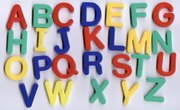The English language can be a complicated language to learn well. Vowels can represent a variety of sounds and can be confusing to master. Learning the difference between short vowels and long vowels can make the entire process easier.
Why Markings Matter
The little squiggly lines or the horizontal dashes over a letter are not there to accessorize or otherwise dress up the letter to get your attention. The lines are called diacritical marks, and they are there to assist in the correct pronunciation of words for those who are just starting to learn English or those who are taking on a secondary language.
These symbols aren’t used when you are writing out the words. They are only put in place when they are in reference books or other materials to assist students in understanding how to correctly sound out and pronounce the word. For long vowels, the macron is used to indicate the way the word should be pronounced. Short vowels are indicated by the breve. A schwa is used for words with multiple syllables to show vowels that have an indistinct or unaccented sound. The schwa looks like a lowercase letter “e” that has been turned on its head. The letter “i” in the word “legible” would have a schwa to indicate how to pronounce the vowel that is surrounded by so many other vowels that have the potential to sound relatively the same.
Long Vowels in Practice
The long vowels are the best to start with when learning this important part of the English language. Basically, the long vowels have the same sound as the letter names. This means that a long “a” sound is just like the "a" in the word “able.” A long “o” sound is the same as it sounds in the word “over.” A long “u” sound is the same as it sounds in the word “blue.”
The long vowels in words are represented by a short, straight line directly over the letter. The diacritical mark for the long vowel sound is called the macron. The macron is placed directly over the vowel that needs to be pronounced with a long vowel sound, such as the “a” in the word “ate” or the “e” in the word “evil.” A deviation from this rule comes with the letter “y” when it is not used as a consonant. The macron should be put over the “y” letter in the words “cry,” “dry” and “why,” to name a few.
Short Vowel Symbol
Short vowel words can be more difficult to understand. Words with only three letters often have a short vowel. They use a second vowel or the letter “y” to force the long vowel sound, such as “tea,” “wee,” “bee” and “key.”
The diacritical mark for the short vowel is called a breve. This alerts the reader to use a short vowel sound when pronouncing the word. The half-moon-shaped mark looks like a sideways parenthesis or tiny bowl at the top of the letter. When placed over the “a” in the word “bat,” it denotes that the word should have a soft sound – a short vowel – instead of the harder-sounding long vowel sound of the word “bait.”
When using the letter “y” as a short vowel sound, the word changes completely in language resource texts. So, the word “say” would be written as “sai” in a dictionary because it is a long vowel. The short vowel words that have “i” and “e” can be a bit more difficult. Each of these can take on a subtly different tone.
Related Articles
References
Writer Bio
Kimberley McGee is an award-winning journalist with 20+ years of experience writing about education, jobs, business trends and more for The New York Times, Las Vegas Review-Journal, Today’s Parent and other publications. She graduated with a B.A. in Journalism from UNLV. Her full bio and clips can be seen at www.vegaswriter.com.











